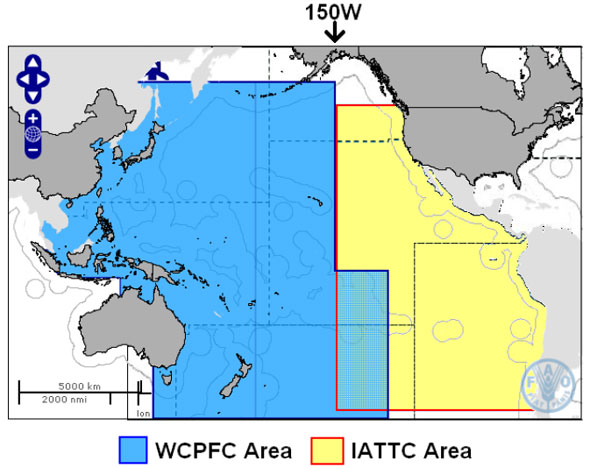North Pacific albacore tuna fishery
The Canadian albacore jig fishery is comprised of 2 fleets. The coastal fleet operates within the Canadian and United States fishing zones in accordance with zone and port access privileges under the US/Canada Tuna Treaty (amended 2013). Vessels in this fleet, mostly 35 to 60 feet in length, fish from the southern California coast to as far north as the west coast. Ocean conditions, the availability of albacore, and abundance and distribution of salmon all influence the size and distribution of the Canadian tuna fleet in any particular year. Effort in the coastal fishery normally peaks in September, after the salmon season for trollers has wound down, although in recent years, with very limited salmon opportunities in Canada, the coastal fleet has been starting on tuna at an earlier date.Catch from the coastal fleet is sold both into the canned and blast-frozen tuna markets.
The Canadian high seas fleet is comprised of larger jig vessels (most greater than 60 feet) with crews typically of 2 to 4 fishermen that remain at sea for trips of several months. These vessels, many of which are equipped with large freezers, operate primarily from west of the dateline to the Canadian zone in the north Pacific. Offshore fishing in the north Pacific on the Wake Island grounds usually starts in late May or June and, weather and tuna abundance permitting lasts through late fall as the vessels follow albacore towards the North American coast. Offshore vessel catches are sold primarily into the blast-frozen sashimi market.
Species information
Fishery information
- Tuna consultations
- B.C. Tuna Fishermen's Association
- Current North Pacific albacore tuna management plan
- Pacific Albacore Tuna Management in Canada
- Research documents and stock status reports - Scientific papers and short resource status papers, available through DFO's Canadian Science Advisory Secretariat (CSAS) site
Forms
- Map: WCPFC/IATTC convention areas
- WCPFC/IATTC Vessel Registration Form (required by all tuna harvesters)
- DFO Vessel Monitoring System Information (includes approved VMS units list and DFO National VMS registration forms)
Canada/USA Pacific albacore treaty
- Treaty Between the Government of Canada and the Government of the United States of America on Pacific Coast Albacore Tuna Vessels and Port Privileges (1981)
- US/Canada Tuna Treaty (amended 2013)
Authorized Canadian vessels
Map: WCPFC/IATTC convention areas

- Date modified: